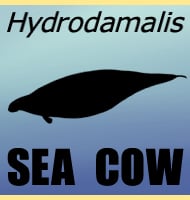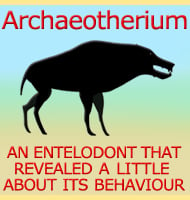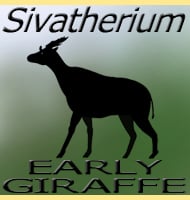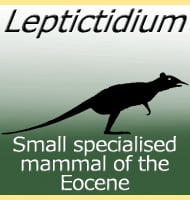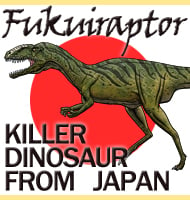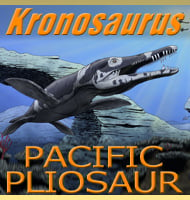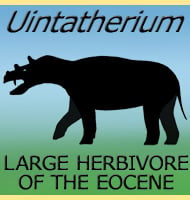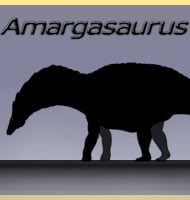(Revision 3)
What makes a pterosaur a pterosaur?
Firstly a pterosaur is not a dinosaur, the pterosaurs evolved from a different line to the one that gave rise to the dinosaurs. Nor are pterosaurs the ancestors of birds. Enough complete fossil evidence now exists to prove that birds evolved from the feathered dinosaurs. Also there is no such animal called a pterodactyl. This word is a shortened from of the name Pterodactylus, and as such ‘pterodactyl’ does not represent any particular genus.
Pterosaurs are the earliest known vertebrates to master the air by flying, and until their evolution the only other animals in the air where flying insects. Pterosaurs are also the largest known flying animals ever known to exist, with even the largest of today’s bids not even coming close to the largest pterosaurs.
Discovery history
The first pterosaur known to science was Pterodactylus, although at the time not everybody was certain as to what it actually was. Back in 1784 when Pterodactylus was first described by the Italian naturalist Cosimo Alessandro, it was envisioned as an aquatic creature that used its ‘wings’ to propel itself through the water. Amazingly even though the man who eventually named Pterodactylus, George Cuvier, put forward the correct theory that it was a flying creature, there were still many who held firm to the aquatic animal theory for several decades afterwards.
Despite this the idea that pterosaurs were flying creatures did rapidly gain acceptance, although the exact type of creature was still being debated amongst the scientific community of the time. Along with giving it the name, George Cuvier also noted that the specimen represented a reptile that could fly. Although he was correct, no such precedent for a flying reptile was known in the realms of natural history, and the very idea that a reptile could fly was simply beyond the imagination of many of the day’s naturalist. A more comfortable idea for them was that the pterosaurs were more like bats and possibly to an extent, the birds.
The problem with this apart from being incorrect biologically is that it also inferred similar behaviour and characteristics to pterosaurs. It would not be until fresh minds and the discovery of other fantastic reptiles such as the dinosaurs that people realised and accepted that reptiles once existed in forms that are completely different to anything we know today.
A further problem from the time is that the discovery of Pterodactylus was so radical to the world of science that it had the effect of many specimens being attributed to this genus as slightly different species of the same genus, when in actual fact they represented different kinds of pterosaur altogether. This ‘wastebasket taxon’ effect is by no means unique to Pterodactylus or even the pterosaurs as a group, but at the time it caused much misunderstanding and confusion about pterosaurs. It would not be until the closing years of the twentieth century that the mass study between different specimens combined with the new knowledge of changing morphology between individuals of different ages of the same species, that many of the ‘classic’ pterosaur genera could be cleaned up with the exhaustive lists of unnecessary species names got reduced to the actual representative types.
Classifications
Pterosaurs are usually broken down into the two groups called Rhamphorhynchoidea and Pterodactyloidea. Rhamphorhynchoid pterosaurs are the earliest group and represent basal pterosaurs like Rhamphorhynchus and Anurognathus. As a group they usually had long tails and shorter metacarpal bones in the wing. The group first enters the fossil record towards the end of the Triassic and lasts until the end of the Jurassic.
The pterodactyloid group are thought to have their origins from within the rhamphorhynchoid group, and first appear during the middle Jurassic. Named after Pterodactylus, they were more typified by having shorter tails and longer beaks more suited to piscivorous lifestyles, although some probably were still insectivorous, especially as juveniles. This group lasted until the end of the Cretaceous where they disappear from the fossil record along with the dinosaurs and the large marine reptiles. The pterodactyloid group is further broken up into ornithocheiroidea, Ctenochasmatoidea, Dsungaripteroidea and Azhdarchoidea, all if which are termed ‘superfamilies’ that can be broken down further into smaller groups of similarly related pterosaurs.
A third group called the Wukongopteridae also now exists, and is now the home for pterosaurs that display both primitive and advanced features. Although named after Wukongopterus, the most famous member of this group is called Darwinopterus. This pterosaur has been heralded as a transitional form, hence it’s naming after Charles Darwin who really brought the idea of evolution to the public consciousness. Classification of transitional forms is always difficult however which is not only why the Wukongopteridae was created, but a new currently unranked group called the Monofenestrata has now been created to appear before both the Wukongopteridae and much larger Pterodactyloidea super family. This is mainly because skull forms long associated with the Pterodactyloidea are now known to have existed in some more primitive forms as well. This is explained by fossil evidence that shows pterosaurs advanced through a process of modular evolution where only some body parts changed while others stayed the same.
Origins
With lightweight hollow bones and gracile builds, pterosaurs were very delicately built in life. Because their bones were hollow, they usually end up getting crushed under the weight of sediment deposits, and this not just produces flattened reliefs, but can cause some distortion to the shape of the bones. This means that only certain areas such as the Solnhofen beds in Germany and Araripe plateau of Brazil reveal detailed specimens. It is also why a clear lineage between pterosaurs and their immediate ancestors is for the most part largely unknown.
The pterosaurs most probably evolved from arboreal (tree dwelling) reptiles that had evolved thin growths of skin between their legs so that they could glide from tree to tree. Even though all this does is slow the rate of descent so that the animal can land on a tree before it hits the ground, the principal mechanism is there. Such a mechanism would be made more capable with a larger ‘wing’ area and so the individuals with the larger wings could glide further and be more successful. Greater success would mean a greater number of offspring, which in turn would mean more, larger winged versions like the progenitor.
Larger wings would need stronger muscle attachment to move them around, and eventually the wings could not just be manipulated for steering, but also flapped so that the animal could go even further. Weight reduction from lighter bones, larger skull fenestra and reduction of non-essential body parts would eventually lead into a morphology resembling the earliest pterosaurs.
Biology
Pterosaurs had specially adapted bones which were exceptionally light weight. This was achieved by the bones being hollow and filled with air. These bones were also capable of maintaining rigid strength ensuring that the wings kept their shape. The drawback as stated above is that these bones were not very resilient to crushing forces such as the build-up of sediment. However this was not a problem for the living animal, as it would not be exposed to such forces until after it had died.
Many pterosaur species have the presence of pycnofibres preserved with their remains. Pycnofibres are the pterosaur equivalent of mammal hair, although the actual structure of hair and pycnofibres is actually quite different. The amount of pycnofibre coverage can vary greatly between species, with some kinds of pterosaur hardly having any coverage to others that had their entire bodies covered.
The purpose of pycnofibres is thought to have been exactly the same as the purpose for hair in mammals; insulation. By having insulation, a pterosaur could maintain a higher internal body temperature, and has even led the idea that pterosaurs may have actually been warm blooded. By having a warm blooded metabolism, pterosaurs would have more easily been able to maintain the active movements required for flight.
A higher metabolism also means a higher rate of respiration, but evidence for this exists in the presence of internal air sacs. These air sacs would have helped to greatly increase the rate of respiration when active, and if they worked in the same way as air sacs in modern birds do, would have ensured that the lungs had available oxygen supply whether the pterosaur was breathing in or out. The drawback to a high metabolism is that it requires a high calorie intake to maintain. With this in mind it’s possible that some pterosaurs may have learned to use flight techniques such as ‘dynamic soaring’ to reduce the required amount of calories, or lived lifestyles that required very little energy expenditure to find food.
CAT scanning of extinct animal skulls is now a common practice, and helps to reveal the layout and position of the brain and associated soft tissue of the creature when it was alive. This of course has been done with numerous pterosaurs, and here it is usually seen that the areas for determining balance are highly developed, indicating that pterosaurs were very adept at making precise adjustments in posture and wing movement.
Of particular importance is the orientation of the inner ear which can reveal if a pterosaur held its head straight and level with the body during flight, or down towards the ground at an angle. Not only can knowing this allow palaeontologists to infer to specific hunting strategies, in can also reveal information about the flight dynamics at work with the morphology of differing pterosaurs.
Wing structure
Pterosaur wings are often overlooked as being simple stretches of skin supported by a bony rod, when in all actuality nothing could be further from the truth. Pterosaur wings start with the arms which form the central support for the wing. Imagine looking down on the wing from the top down, you would see that the first part of the wing stretches from the wrist to the shoulder. This part of the wing is referred to as the Propatagium which was further supported by a bone called the pteroid, something that appears to be unique to pterosaurs. The arrangement of the pteroid continues to be a matter of dispute, as is its possible articulation. It could also be that how it worked may have varied according to different species.
The hands of pterosaurs had four fingers or ‘digits’ as they are actually called. The first three digits were not connected to the wing and would likely have been of use in gripping to surfaces, especially in the smaller pterosaurs. The fourth digit was different to the first three in that it was extremely elongated, and it was in fact this ‘finger’ that formed the main trailing edge support for the wing.
From the tip of the fourth digit towards the body and sometimes hind quarters was the main wing area. This is called the Brachiopatagium, although it is often hard to ascertain where exactly it joined the main pterosaur body. Fossil evidence of some pterosaurs where soft tissue impressions have been preserved such as with the pterosaur Sordes, show that the wings connected to the hind limbs, but it is uncertain if this applies to all pterosaurs. Despite the evidence that supports the joining of the wing to the hind limbs, it is very likely that the exact area of attachment was more dependent upon the individual species of pterosaur.
The actual construction of the wing area is more than just a skin membrane. The wings had a latticework of fibres known as actinofibrils. This criss-crossing arrangement would have helped strengthen the wing especially during in-flight manoeuvres. The internal structure of the wings also included a small amount of muscle and a network of circular blood vessels. Larger pterosaurs also seem to have had air sacs present in their wings as well. Whether these sacs were for weight reduction or even an aid for respiration for a larger pterosaur is hard to establish with certainty.
Some pterosaurs, particularly some members of the more basal rhamphorhynchoid group, also have a membrane between their hind legs. This is called the Uropatagium, but its precise function remains unknown, and its extent most certainly varied between species. It could have acted like an ‘air brake’ used when the pterosaur descended to land, or for pulling a tight manoeuvre when chasing agile prey. This feature could have been a throwback to a feature present in pterosaur ancestors, as it seems to be largely absent from the lore advanced pterosaurs.
Flight
In the early days of pterosaur discovery most researchers considered them to be only capable of gliding and as such reliant upon thermal currents and up draughts to maintain flight. This in part was fuelled by the notion that all reptiles, based on those we know today, are cold blooded. A cold blooded creature they thought would be required to glide to reduce the need for active muscle movement, something associated with warm blooded animals. It was also thought that some of the larger kinds such as Pteranodon had wings that were simply too big to flap up and down.
Today the idea that pterosaurs could only glide is laughably obsolete, although it is recognised that some pterosaurs especially the larger varieties may have glided for extended periods in order to reduce the amount of calories required for flight. This would have been especially useful for pterosaurs that required keeping their energy expenditure to a minimum when searching for prey.
Smaller pterosaurs certainly did not glide when chasing after insectivorous prey. Anyone who has seen a dragonfly on the wing can appreciate how sudden they can turn without even a hint of slowing down, and capturing such manoeuvrable prey by just gliding after it would be near impossible.
Larger pterosaurs like Pteranodon are thought to have hunted for fish across the open ocean and as such spent extended periods away from land. In order to reduce their expenditure they did not just simply glide but may have used a method referred to as dynamic soaring, in this case a method of exploiting the air patterns over the ocean waves.
By flying low into a trough between two sets of waves, a Pteranodon could turn into the oncoming wind as it rises over the crest of a wave. Because the air has to rise over the wave, it gets packed together increasing its pressure. This increased pressure would cause the Pteranodon to rise up into the air without any effort on its part. Once up, the Pteranodon could then change direction and dive again, this time with the wind behind it, increasing its speed so that the next time it pulls the manoeuvre the effect is even greater.
This building of momentum by using the wind is the exact same method used by a modern day Albatross, a bird of similar size and wing area to Pteranodon. The principal of dynamic soaring is also used by glider pilots to remain airborne for longer.
The exact flight technique used by pterosaurs is still not known with certainty, although much study has been done, including flying model reconstructions of pterosaurs. Now making a working model of a living creature that has all the degrees of motion that the original animal has is a very difficult task. The National Geographic ‘Sky Monsters’ documentary featured a groups attempt to create a flying pterosaur model. Due to technological limitations the model was carried up by a remote aircraft which then released the model in flight. Although technical failure of the parts inside meant that the demonstration was unsuccessful, the group still managed to demonstrate the aerodynamics of a pterosaur wing and basic manoeuvring ability.
A very exciting possibility is that pterosaurs were able to fly soon after hatching from the egg. This is evidenced by looking at the proportions of the wing bones throughout the growth stages. Juvenile specimens often exhibit morphological differences from their adult forms, but the proportions of the wing bones always remain the same with the different wing bones growing at the same rate as one another. This indicates that the wings of a pterosaur juvenile were just as flight capable as when they grew larger in later life.
How pterosaurs got airborne is another disputed area with early depictions hailing from the time when they were thought to only glide, which had pterosaurs leaping from cliff tops and catching the strong up draughts in their wings. While this can be still used as a model for some species, it cannot be applied to all pterosaurs. Fossilised track ways prove that pterosaurs spent time on the ground, and some researchers think that they could have run while flapping.
Another theory, one that is gaining wider acceptance, is that pterosaurs could ‘vault’ themselves into the air. This would work by suddenly pushing their bodies off the ground with their wings. Once off the ground, they would then lift their wings and begin flapping towards the ground to give them lift. This makes good sense as the muscles that moved the wings were probably the strongest in the body. Couple this with the lightweight construction of the skeleton, and it’s easy to imagine a pterosaur pushing itself into the air before flying off.
Ground movement
When pterosaurs were first realised to be flying animals, they were thought to have perched in trees like birds. The summarisation for this was simple; birds fly, pterosaurs flew, therefore pterosaurs must have perched like birds. Although some pterosaurs did indeed live in the tree canopy, and probably rested on branches, it is now accepted that the vast majority of pterosaurs lived on the ground when not flying. However, pterosaurs likely chose their resting places carefully, perhaps preferring high up, hard to reach places like rock outcroppings and plateaus away from predators like carnivorous dinosaurs.
Because of continuing comparisons to birds, pterosaurs were also thought to have been bipedal when on the ground. This led to the now out-dated reconstruction of pterosaurs holding their wings up to keep them off the ground, something that is considered extremely unlikely for a resting posture. For example, if you try holding your arms out to your side, you’ll find that while you can keep them there for a short period of time, they’ll eventually start to ache after a bit. In pterosaurs, the bones were lighter, but in order to maintain the posture they would still have to be tensing muscles to keep their wings high.
Today the fossilised track ways of pterosaurs are well documented, and these clearly show not only the rear feet, but the hands of the wings in contact with the ground, confirming that pterosaurs did indeed walk in a quadrupedal fashion when on the ground. Study also shows that some pterosaurs walked with the wings supporting the body from underneath as opposed to the sides.
How well a pterosaur moved on the land depended somewhat on the species in question. Pterosaurs with larger feet were suited to walking on soft ground like the muddy banks of a lake or river, while those with smaller feet were more suited to dry and firm soil. Some pterosaurs are even thought to have been able to run, perhaps to chase after prey items that tried to escape by running into the undergrowth, giving them a taller, erect walking gait.
Reproduction & growth
As briefly mentioned above, much of the confusion over numerous pterosaur species came from the fact that no one knew how much pterosaurs changed during their lives. These changes can be seen in some species where the juvenile specimens have radically different skeletal structures to those of the adults. Often the most striking difference is the length and proportion of the skull. A common trait is juveniles having shorter jaws and dentition more suited to catching insects, where in adults the jaws are proportionately longer, with teeth suited more seizing fish.
These changes are best known for pterosaurs where multiple remains exist for the genera which clearly show the changing morphology across different aged individuals. It also suggests that the younger individuals of a pterosaur species filled a different ecological niche to that of their parents, thereby avoiding direct competition with them.
The size of the hips in pterosaur remains is usually taken as a reliable indicator between male and female individuals, with females having wider hips to help with the passage of eggs. This is taken as a more reliable indicator than the study of crests which can change greatly over the course of a pterosaurs life, especially in males.
The ratio of female to male remains is considered by some to be an indicator of the reproductive habits of some pterosaurs. In Pteranodon the number of females greatly outnumbers the number of males, especially the mature males with fully developed crests. This has been interpreted as males taking up residence in a particular area and living a polyganous lifestyle, mating with all the females that are within their territory. Such behaviour would mean that males would constantly have to defend their territory, and only the most successful males would breed. This competition may also have driven out the lesser males, possibly stunting their development by driving them away from the main gathering and feeding areas, reducing their chances of surviving long enough to reach full maturity.
Due to the diverse nature of different pterosaur species, it is uncertain how well this model can be applied to other species. It is just as probable that some pterosaurs could have formed loose colonies of mating pairs, or perhaps isolated themselves from a larger group while nesting.
Display crests
Although not all pterosaurs have crests, those that do can truly astound palaeontologists. Crest shapes can vary from simple raised structures only a few centimetres high to the preposterously ornate and huge crests on others like Nyctosaurus, whose ‘L shaped’ head crest is over half as high as one of its wings is long. Crests are also not just restricted to the back of the head, but can also run forwards and down the snout as well.
The easy explanation for these crests is that they were primarily for display. The display answer covers both inter species recognition so that two pterosaurs of the same species can recognise each other, as well as for the purpose of attracting a mate. The latter is a very credible theory as the study of male pterosaur specimens of the same species but different ages reveals that the crests only became fully developed when the males reached reproductive maturity.
Female pterosaurs of crested species also had crests of their own, although usually they were not as developed as the males, and this has in the past caused confusion between female and immature male specimens. Aside from the shape of the crest, it is highly plausible that crests may have been brightly coloured to accentuate their presence, especially if pterosaurs had specific breeding seasons.
Some pterosaur researchers also speculate upon other functions that can be attributed to crests. The higher and broader crests are considered by some to have acted like rudders, helping with steering during flight. Some of the broader crests or ‘head sails’ like in the tapejarids may have been able to catch the wind, reducing the amount of work necessary for a pterosaur to keep itself airborne.
Many studies have been conducted upon the aerodynamic effects of different head crests, and for the most part, no overly negative or positive effects have been noted. What is known is that not all pterosaurs had crests, and those that do have such large variation between different species, that the only universal explanation that can be applied to all pterosaurs is display.
Daily activity
One of the most common fossilised parts of pterosaur remains where the skull has been preserved are the scleral rings. Study of how these rings can reveal important insights into the life of the living creature, such as if it was active by day or during the night. This is sometimes referred to as niche partitioning, and means that a pterosaur that is active throughout the night would avoid direct competition with another species of pterosaur that was active in the same area but during the day instead.
Being active at different times can also be because a particular food supply was more abundant at certain times of the day. Also, it can be a survival strategy to avoid hunters. Some creatures are known to be active only during the twilight of dusk and dawn to avoid the predators of both the day and the night.
Diet
The earliest pterosaurs were most likely to have been insectivores, and many of the later examples such as Jeholopterus show specialised adaptations for this way of life. Later members of the pterosaurs started to include fish into their diets, with some such as Pterodactylus and Rhamphorhynchus being considered to take either fish or insects. It is also highly probable that what pterosaurs ate depends on how old they were, with juvenile specimens having shorter beaks with thin pointed teeth more suitable for insects, whereas older members of the same species having proportionately longer beaks, with stronger teeth more suited to a fish diet.
Pterosaurs that did have a piscivorous diet are usually imagined as hunting by skim fishing. This is where the pterosaur would fly so close to the water that when it opened its jaws at least the lower jaw dipped beneath the surface of the water. When the jaw hit a fish the jaws were closed, and the pterosaur then carried the fish from the water.
Many species of pterosaur have teeth that are actually smaller near the tip of the beak, becoming larger towards the back, sometimes to the extent that two groups of teeth can be clearly be identified. At a glance it may seem unusual when you compare this dentition arrangement to other predators which typically have the larger teeth at the front for prey capture, but you have to bear in mind the resistance of the water against the tip of the beak when travelling through the water at speed. Larger teeth would create more resistance, making skim feeding more cumbersome and possibly reducing reaction time in closing the jaws around the prey. Smaller teeth are not so much of a problem, and it would be a simple technique for a pterosaur to seize its prey with the tip of its beak before quickly flicking its head back and tossing its prey further back into its mouth where it could then be held by the larger teeth. Not only would this allow more grip on a struggling fish, it may have allowed the hunter to better protect its meal from other marauding pterosaurs that may have tried to steal its prey.
On the over hand some pterosaurs like Zhenyuanopterus had quite the reverse with larger teeth towards the front and much smaller teeth towards the back. The strength of the teeth need to be taken into consideration, and many people think that they would have been too fragile to cope with larger and more powerful prey. It may be that pterosaurs with this kind of dentition focused their attentions on smaller prey, and perhaps used a dipping motion to pluck fish out of the water.
Some pterosaurs actually had toothless beaks but still managed to have been active hunters. Pteranodon, whose name translates to English as ‘Toothless wing’ was almost certainly a dedicated piscivore, as evidenced by the large amount of fish remains such as bones and scales that are often found inside Pteranodon remains. New thinking to Pteranodon’s feeding strategy has brought the proposition that it did not just scoop up fish as it flew overhead, but may have actually landed on the water, or even dived into it from a height like Gannets do today.
Not all pterosaurs were thought to have fed while on the wing and the azhdarchoid line of pterosaurs that include members like Quetzalcoatlus and Zhejiangopterus, which are now thought to have hunted for food like storks do today. Not only could this include hunting like plucking fish from the water’s edge, it could also include stalking through long grass to find things like snakes and lizards to eat.
One of the most specialist pterosaurs was Peterodaustro, a filter feeding pterosaur that perhaps lived like a modern day flamingo. Pterodaustro had a beak that curved upwards that instead of being filled with strong needle teeth like some other pterosaurs, it had up to a thousand bristle teeth that protruded upwards from the lower jaw. These highly specialised teeth would have allowed Pterodaustro to scoop up a beak full of water, and then strain it out so that only a beak full of small invertebrates, plankton and algae would remain.
It’s also entirely probable that some pterosaurs were scavengers looking for carrion while out in the wing like vultures do today. A gliding flyer would have expended very little energy while still covering a massive area in its pursuit for food.
Not all pterosaurs may have been carnivorous however. Some palaeontologists have put forward the idea that some pterosaurs also included fruit in their diets, making them possibly omnivores, or to the extreme end of the scale, frugivores.
Predators
Pterosaurs would have been attacked and eaten by any predator able to get to them. There is a reported case of a spinosaurid tooth embedded in the vertebra of a pterosaur, and the tooth of a dromaeosaurid dinosaur embedded in pterosaur remains from Canada. Pterosaurs would also need to drink, a time when they were probably at their most vulnerable as there were not just dinosaurs, but large crocodiles lurking in the water. At sea, they would have had to avoid plesiosaurs and mosasaurs, and if some did indeed take to the water during feeding, then sharks may have been a problem too. It is also possible that some larger pterosaur genera may have fed upon the smaller species. The pterosaur one main survival advantage was that as flyers, they would have been out of reach of any of the terrestrial and marine predators when flying high.
Extinction
No one can agree exactly on what finished the pterosaurs, but one popular theory is competition with the newly evolved birds. The birds are generally thought to have been more manoeuvrable, and more resilient to harm than the pterosaurs, and simply outcompeted them. This may actually be true for the rhamphorhynchoid group that largely disappeared at the end of the Jurassic. The rhamphorhynchoid group had more of a focus on being insectivores, and when the birds appeared, the food supply could not support both kinds of creature indefinitely, especially if the birds were more successful breeders, raising more successful broods with a higher number of young.
However the appearance of birds on its own cannot explain the disappearance of the pterodactyloid group, although they did probably help drive the smaller members of the group to extinction by being more successful, as well as competing with the juvenile forms of some pterosaur species. The larger members such as Pteranodon and Quetzalcoatlus however survived to the very end and had lifestyles that kept them out of direct competition with birds.
It’s highly probable that the asteroid impact that marked the end of the Cretaceous caused a severe reduction in marine life. This would have happened from large amounts of dust and debris being thrown up into the atmosphere from the impact reducing the amount of light falling upon the world’s oceans. This would cause a massive drop in the amount of phytoplankton which would be food to fish and by extension everything that preyed and relied upon the fish to survive. The long term survival of all animals that relied upon fish would have been bleak, and only a few weeks of starvation at most would have been enough to finish most of the predators. By the time the phytoplankton and the fish stocks began to recover it was already too late.
It would not have been plain sailing for pterosaurs that lived on the land and ate other prey items either. The ensuing darkness may have affected their ability to see to hunt, and weather patterns may have also been chaotic in the immediate aftermath of the impact, making flying difficult if not impossible. Also many of the later pterosaurs had grown gigantic, and as such would require a much larger calorie intake to survive. If it were not maintained, they too would eventually starve.
When considering what one event finished a group, it is more likely that it was not just one thing, but an amalgamation of several different factors that brought the end for the pterosaurs.
Really extinct?
Even though pterosaurs are considered to be an extinct group, in cryptozoological circles, occasional descriptions of animals that match those of ancient pterosaurs are still sometimes made. These sightings usually come from eye witnesses who claim to have been ‘buzzed’ by a creature while they were out about their business, or explorers who have heard reports of pterosaur like creatures from native peoples, who in turn recognise and pick out images of pterosaurs as the creatures in their stories when they are shown them. There have even been cave drawings made several thousand years ago that feature drawings of winged creatures that resemble pterosaurs.
Although some researchers continue to search for the existence of living pterosaurs, these sightings are not accepted by the wider scientific community. They do however serve as writing material for popular fiction in the same way as the Loch Ness Monster gets described as being a plesiosaur.

